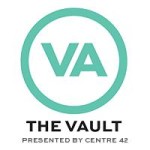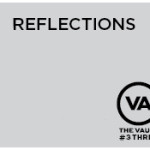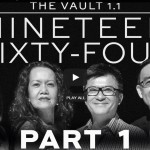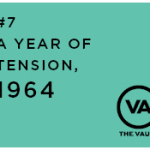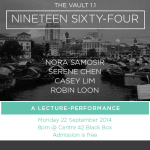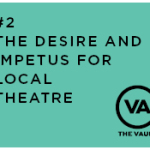We asked Nora Samosir and Serene Chen about their personal responses to The Vault, its concept and the working process:
What was your initial reaction(s) when you were first invited to be part of The Vault?
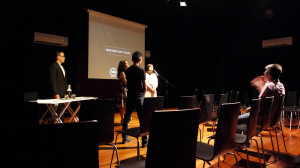
Nora: Excited to excavate our theatre history, challenged by the fact that even though it is only decades old, most Singaporean theatre practitioners know hardly anything about our past works.
Serene: I was excited because I am a bit of a “serial starter-up”, meaning that I like to be part of completely new enterprises or initiatives … probably because the rules are not (yet) set in stone. Also, I enjoy research and joining the dots. However, I really wasn’t sure about how “responding” to the plays would make a showcase. I could not really visualise what the “audience” was going to get. Why would they be interested in my response?
You had spent over a month working on this inaugural presentation of The Vault, together with the other collaborators. Looking back now, can you share any reflections you have of The Vault as a personal & collaborative project?
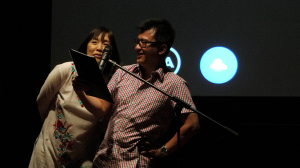
Nora: The Vault fills a gap in our theatre landscape; we can only nurture a thriving national theatre if our young practitioners know what our theatre roots are both modern and traditional, how far we have grown and so, how we can proceed.
Serene: I am very liberated by the process as it has allowed me freedom to explore these 2 texts. On one session, I felt I wanted to pursue certain broad themes. As the week elapsed, I felt that I was being too structured and predictable to go down a rather “prac-crit route” (Practical Criticism, done as Literature in JC). No one was making me do so. I then confessed to my collaborators that I really was drawn to only bits of this and that from the scripts. I was encouraged to respond precisely to those bits with original comments or articles or any other medium. It took a while for me to get my head around it, but I did. I think we found quite a democratic way to weave everyone’s voices in. It helps to have a dramaturg. It also helps that everyone’s experience is valued.
The surprising thing is that it was a very democratic process. I was doubtful of that being workable at the start. I found ourselves to be free to express our opinions but also respectful of the 2 playwrights’ works and the times they lived in. I certainly have never met these two gentlemen, Mr Lim Chor Pee and Dr Goh Poh Seng. Their scripts are not easily available to the public, but I would have thought that as an actor and an educator, I would have at least had a chance to catch a past video recording, a publication with their scripts…but nope. So, if not for The Vault, they still would have eluded me.
Describe 3 things you found interesting about the working process for The Vault.
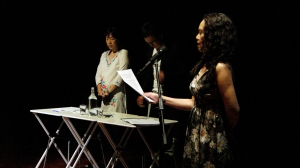
Nora:
1. We were not limited to any specific methodology of research or area of exploration in responding to the two plays we were looking into, anthropological, sociological, political, dramaturgical, etc.
2. There was enough time in between meetings to do our own research and then during our sessions to share, discuss and even argue for or against the relevance of our findings.
3. This is perhaps the most interesting thing about our process, the openness of collaborators to viewpoints different from our own and the opportunity to encounter and engage different points of view.
Serene:
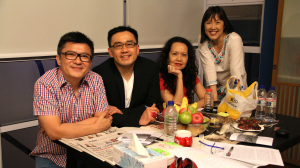
1. Discovering the play scripts of “When Smiles are Done” & “A White Rose at Midnight”.
2. Being able to work with a director, a dramaturg, fellow teacher and actress so intensively and so intensely to create a response is precious. This is unusal for most productions where time is of the essence. Everyone does their own thing as efficiently and as superbly on their own. Then, the director joins everything together. But that might be one rehearsal in the first 2 weeks and then, the last time, during tech week. I am using inappropriate terms, of course. This isn’t a “production”, but I’m afraid I have no precedence to compare it with.
3. It is an archive and more. I quite simplistically saw “The Vault” as the respository for Singapore classics when I was first introduced to it. But now, I see it as more of a living thing. Plays need to be read, staged, talked about ,for them to have a life. I feel that by being able to respond to them, we have extended their shelf life, maybe even their stage life if someone wants to pick them up and stage them. So, in our process, we give the plays more context (videos, articles, news reports, public figures of those times, popular music and other influences). I think of it now as archive + oral commentary. Casey reminded us that our “findings” would be put online for people to use. So, I think this vault is a good one. Everyone can have the key to Singapore literature.
If you had attended the Lecture-Performance and would like to share with us your thoughts and/or personal reflections, please email us at info@centre42.sg. We would love to hear from you!

